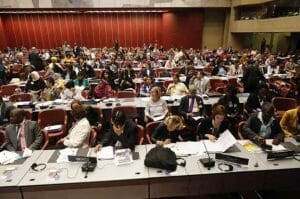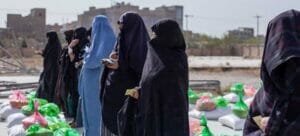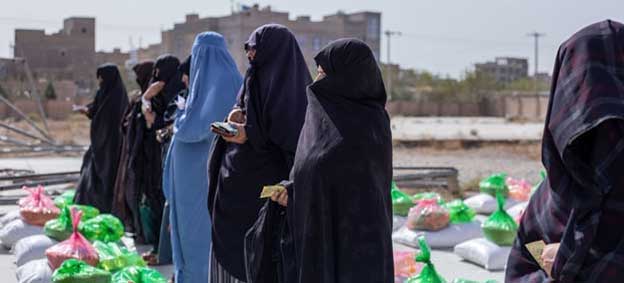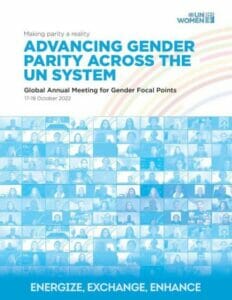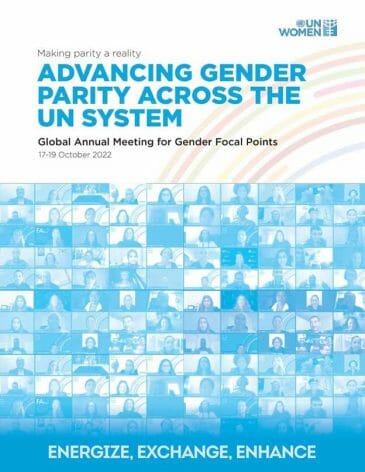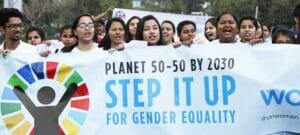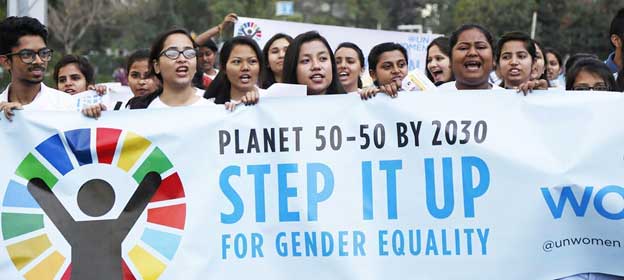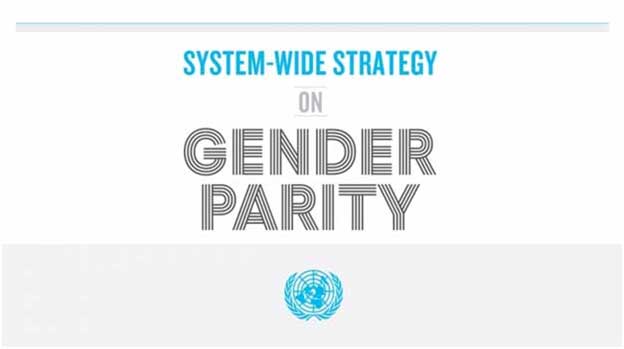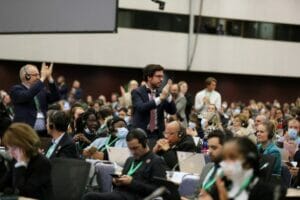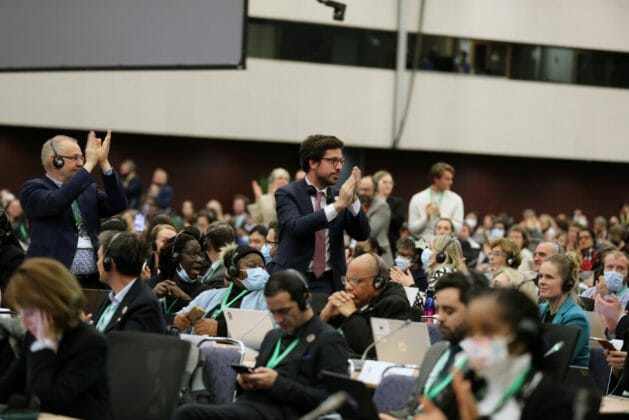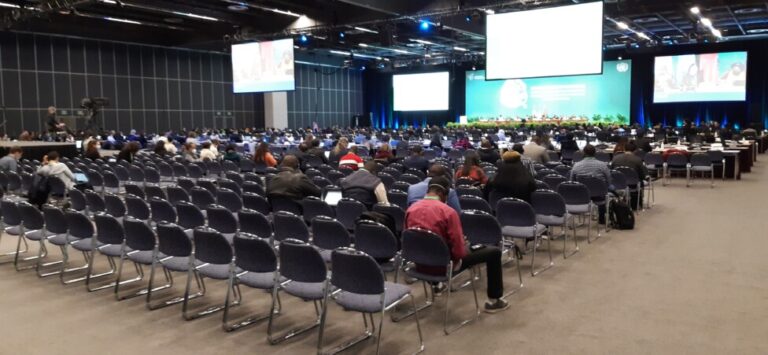

Credit: UNESCO Attribution 3.0 IGO
Celebrated every 3rd of May, this year’s theme for World Press Freedom Day will be “Shaping a Future of Rights: Freedom of Expression as a Driver for all other Human Rights.”
By Thalif Deen
UNITED NATIONS, May 1 2023 (IPS)
The United Nations has consistently been a vociferous advocate of freedom of the press – and, most importantly, the right of journalists to report without fear of reprisals.
But regrettably, the UN is also one of most opaque institutions where transparency is never the norm.
Journalists, rarely if ever, were able to get any on-the-record comments or reactions from ambassadors, diplomats and senior UN officials because most of them follow the advice given to Brits during war-time censorship in the UK: “Be like Dad, Keep Mum”.
As Winston Churchill once remarked: “Diplomacy is the art of telling people ‘to go to hell’ in such a way that they ask for directions.”
But as a general rule, most ambassadors and diplomats did not tell us either to go to hell or heaven– but avoided all comments on politically-sensitive issues with the standard non-excuse: ”Sorry, we have to get clearance from our capital”.
But that “clearance” from their respective foreign ministries never came. Still, it was hard to beat a response from a tight-lipped Asian diplomat who told me: “No comment” – and as an after-thought, added: “And Don’t Quote Me on That”.
And most senior UN officials, on the other hand, never had even the basic courtesy or etiquette to respond to phone calls or email messages even with an acknowledgment. The lines of communications were mostly dead.
When I complained to the media-savvy Shashi Tharoor, a former UN Under-Secretary-General, head of the one-time Department of Public Information (DPI) and a prolific author, he was explicit in his response when he said that every UN official – “from an Under-Secretary-General to a window-washer”—has the right to express an opinion in his or her area of expertise.
The US Freedom of Information Act (FOIA), which dates back to 1967, has provided the public and mostly the press in the United States the right to request access to records from any federal agency—and has been described as “the law that keeps citizens in the know about their government”.
As a result, some of the newspaper scoops and insider information in the US mainstream media have come following requests from American journalists under the FOIA.
But a longstanding proposal for a FOIA at the United Nations has failed to get off the ground due largely to the inaction by the 193-member General Assembly, the UN’s highest policy making body, resulting in the lack of transparency in the inner workings of the UN and its Secretariat.
So has the proposal for a UN Special Envoy to deal with safety of journalists—dead on arrival (DOA).
Andreas Bummel, Executive Director, Democracy Without Borders, told IPS: the UN is an institution that exercises public authority directly and indirectly with over 30,000 working in the Secretariat (plus the UN system worldwide).
“As such, it needs to be accountable not only to its member states but to citizens and the public at large.
Establishing a proper freedom of information procedure at the UN will be an important tool to enhance this, declared Bummel, co-author of “A World Parliament: Governance and Democracy in the 21st Century.”
Martin S. Edwards, Professor and Chair, School of Diplomacy and International Relations at Seton Hall University in the US, told IPS: “I must admit I don’t know the legal angles here. This having been said, it’s pretty clear to me that the only way forward for the UN in an era of political division is greater transparency”
Greater efforts to “tell your story better” are not enough. You can’t advocate for “effective, accountable, and inclusive” institutions at the national level without it, within the UN system too. Things like access to information are an essential step in that direction, he added.
In the US, federal agencies are required to disclose any information requested under the FOIA unless it falls under one of nine exemptions which protect interests such as personal privacy, national security, and law enforcement.
In Australia, the legislation is known as Right2Know; in Bangladesh, the Right to Information (RTI) provides resources for those seeking to file a request with government agencies; in Japan, the Citizens’ Centre for Information Disclosure offers help to those interested in filing requests; in India, the Right to Information: a Citizen Gateway is the portal for RTI; Canada’s Access to Information Act came into force in 1983 and Kenya’s Access to Information Act was adopted in August 2016, according to the Centre for Law and Democracy (CLD).
And Sweden’s Freedom of the Press Act of 1766 has been described as the “oldest in the world.”
While FOIA covers access to federal government agency records, the Freedom of Information Law (FOIL) guarantees access to state and local government records. All 50 states in the US also have freedom of information laws that govern access to these documents, though the provisions of the state laws vary considerably.
The Paris-based UN Educational, Scientific and Cultural Organization (UNESCO), which is mandated to oversee press freedom, defines Freedom of Information (FOI) as the right to access information held by public bodies.
According to UNESCO, the FOI is an integral part of the fundamental right of freedom of expression, as recognized by Resolution 59 of the UN General Assembly adopted in 1946, as well as by Article 19 of the Universal Declaration of Human Rights (1948), which states that the fundamental right of freedom of expression encompasses the freedom to “to seek, receive and impart information and ideas through any media and regardless of frontiers”.
FOI has also been enshrined as a “freedom of expression” in other major international instruments, including the International Covenant on Civil and Political Rights (1966) and the American Convention on Human Rights (1969).
In an interview with IPS back in 2017, Samir Sanbar, a former UN Assistant Secretary-General who headed the one-time Department of Public Information (DPI), said the right to information is an integral part of U.N. principles.
But providing that right—even the basic information available in the public domain– has been stymied both by member states and the UN bureaucracy, he added.
He pointed out that the need to “inform the peoples” is implicitly indicated in the UN Charter.
But implementing it was “a basic issue I had experienced throughout my work, with both certain government officials– including those publicly claiming open channels– and many senior U.N. Secretariat colleagues”.
Those who believed “Information is Power” were very hesitant, to what they perceived was sharing their authority with a wider public, said Sanbar who served under five different UN Secretaries-General.
“It was most evident that when I launched the now uncontested website www.un.org, a number of powerful Under-Secretaries-General (USGs) and Permanent Representatives cautioned me against “telling everyone what was happening” (in the UN system) and refused to authorize any funds.”
“I had to raise a team of DPI volunteers in my office, operating from within the existing budget, to go ahead and eventually offer computers loaned from an outside source, to certain delegations to realize it was more convenient for them to access news releases than having to send one of their staffers daily to the building to collect material from the third floor.“
Eventually, everyone joined in, and the site became one of the ten best official sites worldwide.
“We had a similar difficulty in prodding for International World Press Freedom Day through the General Assembly. It seems that even those with the best of intentions– since delegates represent official governments that view free press with cautious monitoring– are usually weary of opening a potentially vulnerable issue,” said Sanbar, author of the book “Inside the U.N. in a Leaderless World’.
This article contains excerpts from a 2021 book on the United Nations—largely a collection of political anecdotes– titled “No Comment – and Don’t Quote Me on That,” available on Amazon. The link to Amazon via the author’s website follows: https://www.rodericgrigson.com/no-comment-by-thalif-deen/
IPS UN Bureau Report

